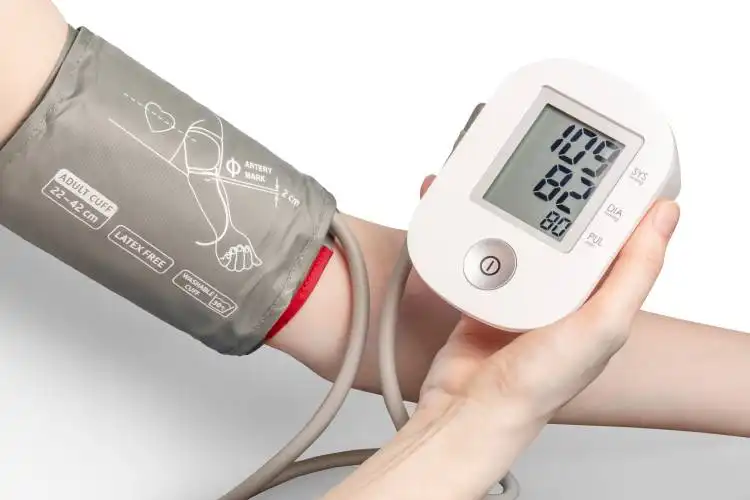Start a Running Store
Spark Your Business Engine with a Savvy Running Store Idea
| Updated


RUNNING STORE
Lace up your entrepreneurial spirit with the idea of operating a running store! This business involves providing runners with everything they need from performance footwear and apparel, to running accessories and nutrition products. It is an ideal arena for the sporty entrepreneur, and offers a unique opportunity to help fellow running enthusiasts reach their next personal best. Not only will your daily run help to tone your muscles, but it can also help to fatten your wallet!
Jump to Business Plan
RELATED BUSINESS IDEAS
Browse ALL Retail & Shopping Business Ideas
Discover Your Perfect Domain
Unlock the door to your online success with our hand-picked selection of premium domain names. Whether you're starting a new venture or rebranding an existing one, the right domain can set the tone for your digital presence. Browse through our curated list, each with its unique potential to enhance your brand's visibility and credibility.
RUNNING STORE MINI BUSINESS PLAN
This a quick reality check to help you identify the strengths and weaknesses of your business concept before you dive in.
Expected Percent Margin:
- Gross Margin: 40-50%
- Net Profit Margin: 5-15%
Earnings Expectations:
- Daily Earnings: $150 - $400
- Weekly Earnings: $1,050 - $2,800
- Monthly Earnings: $4,500 - $12,000
- Annual Earnings: $54,000 - $144,000
Actions to Hit Those Numbers:
Inventory Management:
- Initial Investment: Start with an investment of about $20,000-$50,000 for inventory.
- Supplier Relationships: Forge deals with several reliable suppliers who offer high-quality running gear.
Marketing and Customer Acquisition:
- Digital Marketing: Invest in SEO-optimized website and run social media campaigns consistently.
- Local Sponsorships: Sponsor local races or running clubs.
- Customer Loyalty Programs: Implement to help increase repeat business.
Sales and Customer Experience:
- Customer Service: Train employees to offer top-grade customer service and helpful advice on running gear.
- In-Store Experience: Innovate with services like gait analysis or running clinics.
Cost Control:
- Rent: Choose a good but affordable location—ideally the rent should be less than 10% of expected sales.
- Utilities and Maintenance: Usually stands at about $200 - $400 per month for such stores.
Business Operations:
- Store Hours: Operate the store at least 6 days a week, ideally 7, for about 9-10 hours a day.
- Transaction Volume: Aim for average sales per customer of about $50 - $100.
Please note, these estimations can vary based on a myriad of factors such as location, competition, and consumer behavior. Always consult with a business advisor or financial planner for advice tailored to your specific circumstances.
NOT WHAT YOU HAD IN MIND? Here are more ideas



Browse ALL Retail & Shopping Business Ideas
Grab Your Business Website Name
Before you get caught up in the whirlwind of setting up your business, invest in a domain name. It's a small but significant step that lays the foundation for your brand and makes it easier for customers to find and trust you. Just like you wouldn't build a house without securing the land first, don't build a business without securing your domain name.
"Why? Can't that wait?" Here's why it shouldn't
Step 1: Determine if the Business is Right Endeavor
Breakdown of Startup Expenses
When starting a running store, it is important to understand the startup expenses associated with the business. This includes the cost of the physical space, the cost of inventory, the cost of marketing, and the cost of any necessary equipment. Additionally, the cost of hiring employees should be taken into consideration. It is important to have a good understanding of the total startup expenses before taking the plunge into starting a running store.
Breakdown of Ongoing Expenses
In addition to the startup expenses, it is important to understand the ongoing expenses associated with running a store. This includes the cost of rent, the cost of utilities, the cost of inventory, the cost of marketing, and the cost of any necessary equipment. Additionally, the cost of hiring employees should be taken into consideration. It is important to have a good understanding of the total ongoing expenses before taking the plunge into starting a running store.
Examples of Ways to Make Money
When starting a running store, it is important to understand the different ways to make money. This includes selling running apparel, shoes, and accessories, as well as offering services such as running classes, running clinics, and running tours. Additionally, it is important to consider the potential for online sales and the possibility of partnering with other businesses to increase revenue. It is important to have a good understanding of the different ways to make money before taking the plunge into starting a running store.
Step 2: Name the Business
Naming a business is a crucial step in the process of starting a running store. It is important to choose a name that is memorable and reflects the values of the business. It should also be easy to pronounce and spell, as this will make it easier for customers to find the store online. Additionally, it is important to make sure the name is not already in use by another business. This can be done by conducting a trademark search.
When choosing a name, it is important to consider the target audience. For example, if the store is targeting serious runners, the name should reflect that. It could include words such as “marathon” or “endurance”. On the other hand, if the store is targeting casual runners, the name should reflect that. It could include words such as “jog” or “run”.
It is also important to consider the branding of the store. The name should be unique and memorable, and it should be something that customers can easily recognize. Additionally, the name should be easy to incorporate into a logo and other branding materials.
Finally, the name should be something that the owner is proud of and that reflects the values of the store. It should be something that the owner is comfortable with and that will stand the test of time.
Step 3: Secure Financing
Securing financing is an important step in starting a running store. Business owners can explore various sources of financing, such as traditional bank loans, venture capital, and angel investors. It is important to research the different types of financing available and to understand the terms and conditions of each. Additionally, business owners should consider the amount of money they need to borrow and the amount of time they need to pay it back.
Creating a Business Plan
Creating a business plan is an important step in securing financing for a running store. A business plan should include a detailed description of the business, a market analysis, a financial plan, and a marketing plan. Additionally, business owners should include information about the products and services they plan to offer, as well as their competitive advantages. It is also important to include information about the management team and the company’s goals.
Applying for Financing
Once a business plan has been created, business owners can apply for financing. This may include applying for a loan from a bank or applying for venture capital or angel investor funding. When applying for financing, business owners should be prepared to provide financial statements, tax returns, and other documents. Additionally, business owners should be prepared to answer questions about their business plan and their ability to repay the loan.
Step 4: Find a Location
- Accessibility: When choosing a location for a running store, it is important to consider how accessible it is for customers. Is it easy to find and get to? Is there plenty of parking? Is the store located near other businesses that will draw customers?
- Cost: The cost of the location is also an important factor to consider. How much will it cost to rent or buy the space? What are the taxes and other fees associated with the location?
- Size: The size of the store is also important. Will it be able to accommodate the inventory and staff needed to run the business? Will there be enough space for customers to move around and browse?
- Competition: It is also important to consider the competition in the area. Are there other running stores nearby? If so, how will the store differentiate itself from the competition?
Securing the Location
- Once the ideal location has been identified, the next step is to secure the space. This involves negotiating a lease or purchase agreement with the landlord or seller. It is important to understand the terms of the agreement and to ensure that all legal requirements are met.
- It is also important to consider any renovations or improvements that need to be made to the space in order to make it suitable for a running store. This could include painting, installing shelves, and other necessary improvements.
- Once the space is ready, the store can be stocked with inventory and the staff can be hired. It is important to ensure that the store is properly staffed in order to provide excellent customer service.
- Finally, the store should be properly advertised in order to attract customers. This could include creating a website, placing ads in local newspapers, and utilizing social media.
Step 5: Obtain Licenses and Permits
When starting a running store, it is important to obtain the necessary licenses and permits in order to legally operate the business. Depending on the location, the types of licenses and permits required may vary. Generally, a business license, a seller’s permit, and a zoning permit are necessary. A business license is a document issued by the state that allows the business to operate legally. A seller’s permit is a document that allows the business to collect sales tax from customers. A zoning permit is a document that allows the business to operate in a certain area. Additionally, depending on the state, a business may need to obtain a special license to sell certain types of products, such as alcohol or tobacco.
How to Obtain Licenses and Permits
In order to obtain the necessary licenses and permits, the business owner should contact their local government office. The local government office will provide information on the types of licenses and permits needed and the process for obtaining them. Generally, the business owner will need to fill out an application, provide proof of identity, and pay a fee. The local government office may also require the business owner to provide additional information, such as a business plan or proof of insurance. Once the application is approved, the business owner will receive the necessary licenses and permits.
Cost of Licenses and Permits
The cost of licenses and permits will vary depending on the location and the type of business. Generally, the cost of a business license is between $50 and $500. The cost of a seller’s permit is usually between $10 and $50. The cost of a zoning permit is usually between $50 and $200. Additionally, the cost of any special licenses or permits may vary. It is important to research the cost of licenses and permits before starting the business in order to budget accordingly.
Step 6: Purchase Inventory
When purchasing inventory for a running store, it is important to research different sources. This could include wholesalers, manufacturers, and distributors. Wholesalers are companies that buy products from manufacturers and then resell them to retailers. Manufacturers are companies that produce the products. Distributors are companies that buy products from manufacturers and then resell them to wholesalers. It is important to research the different sources to find the best prices and quality.
Types of Inventory
When starting a running store, it is important to determine what types of inventory to purchase. This could include running shoes, apparel, accessories, and nutrition products. It is important to research the different types of products and determine which ones are the most popular and in demand. This will help to ensure that the store is stocked with the right products.
Ordering Process
Once the sources and types of inventory have been determined, the next step is to order the inventory. This could include ordering online, over the phone, or in person. It is important to research the different ordering processes and determine which one is the most efficient and cost-effective.
Shipping and Delivery
Once the inventory has been ordered, it is important to determine how it will be shipped and delivered. This could include using a shipping company, a delivery service, or self-delivery. It is important to research the different shipping and delivery options to determine which one is the most cost-effective and efficient.
Step 7: Market the Business
When it comes to marketing your new running store, there are a few different ways to go about it. You can start by creating a website for your store and using social media to promote it. You can also create fliers and distribute them in running-related stores and events. Additionally, you can use email marketing to reach out to potential customers. You can also use search engine optimization (SEO) to make sure your website is ranking high on search engine results pages. Finally, you can use paid advertising to reach a wider audience.
Developing a Brand
Developing a brand for your running store is essential for attracting customers. You should create a logo and a tagline that will help customers remember your store. You should also create a unique and memorable brand identity that will make your store stand out from the competition. Additionally, you should create a mission statement that will help customers understand what your store is all about. Finally, you should create a unique customer experience that will keep customers coming back to your store.
Connecting with the Community
Connecting with the local running community is a great way to promote your store. You can start by attending local running events and sponsoring races. You can also partner with local running clubs and organizations to promote your store. Additionally, you can create a loyalty program for customers who shop at your store. Finally, you can create a blog or podcast to share running tips and advice with your customers.
Step 8: Hire Employees
When hiring employees, it is important to find the right fit for the business. Consider the skills and experience the employee will bring to the table, as well as their attitude and work ethic. It is also important to consider the cost of hiring and training employees. Additionally, it is important to consider the legal requirements for hiring employees, such as background checks and other paperwork.
Benefits of Hiring Employees
Hiring employees can bring a variety of benefits to a business. Employees can help to lighten the load of the business owner, allowing them to focus on other aspects of the business. Additionally, employees can bring a variety of skills and experience to the business, which can be invaluable. Furthermore, having employees can help to create a sense of community and camaraderie within the business.
Finding Employees
Finding the right employees can be a challenge. One way to find employees is to post job listings in local newspapers and online job boards. Additionally, networking with other businesses in the area can be a great way to find potential employees. Additionally, word of mouth can be a great way to find employees, as referrals from existing employees can be a great source of potential employees.
Training Employees
Once employees have been hired, it is important to provide them with the necessary training. This can include training on the products and services the business offers, as well as customer service and other operational procedures. Additionally, it is important to provide employees with the necessary safety training and any other training that may be required by law.
Step 9: Open the Store
Opening a store can be a daunting task, but with the right preparation and planning, it can be a successful endeavor. Before opening the store, it is important to make sure all the necessary permits and licenses are obtained. Additionally, it is important to create a budget for the opening of the store and to make sure that all the necessary equipment and supplies are purchased. It is also important to create a plan for marketing the store and to create a customer service plan. Finally, it is important to create a plan for employee training and to make sure that the store is staffed with knowledgeable and friendly employees.
Grand Opening
Once all the necessary preparations have been made, it is time to have the grand opening of the store. It is important to create a plan for the grand opening and to make sure that the store is ready to welcome customers. It is also important to create a plan for advertising the grand opening and to make sure that the store is well-stocked with the necessary supplies and equipment. Additionally, it is important to create a plan for customer service and to make sure that the store is staffed with knowledgeable and friendly employees. Finally, it is important to create a plan for tracking the success of the grand opening and to make sure that the store is meeting its goals.
EXPLORE MORE CATEGORIES
Browse ALL Business Idea Categories
TAKE THE NEXT STEPS










